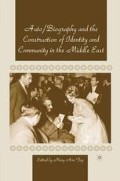Abstract
The peoples of what are today known as the Arab Republic of Egypt and the Democratic Republic of Sudan have interacted for millennia. Their cultural norms, ideologies, and histories are profoundly entangled, particularly with respect to Muslims in cultivating communities along the Nile River and urbanites from the main riverain cities of Egypt and northern Sudan. In the twentieth century, the tangible results of joint British rule followed by the unifying ideologies of the unity of the Nile Valley and Arab nationalism brought Egyptians and Sudanese even closer together.
‘Ayn Shams, Cairo (1997): The sitting room was packed with Sudanese aunties in tobes2 come to see Huda3 off to her wedding in Khartoum. Khadiga was, as usual, in the thick of things, chatting with her circle of friends in the parlor. The younger set—I counted 20—crowded into the bedroom, whose windows opened onto the street. On the bed lay the bride’s travelling outfit—long black skirt, white bodysuit and blouse, and black tarha4 freshly ironed by Mushira, Huda’s Egyptian neighbor and friend. The mother of the bride came round and rubbed all of us with khumra.5 Khadiga’s daughter Mai got a tape recorder and some Sudanese tapes, and the clapping started. A few women ululated the Sudanese way, one starting and others taking over. Then someone put on the cassette of a popular Egyptian singer. An Egyptian neighbor from across the street came over, and with women rushing to close the shutters, performed a highly erotic version of a belly dance. The bride’s 10-year-old niece, Karima, who had shown me her skill at the markedly different Sudanese dance style a couple of weeks earlier, also tied a scarf around her hips and belly-danced to the Egyptian song.
This article is based on ethnographic fieldwork conducted between 1994 and 1997 with dissertation grants from of the Population Council’s Middle East Awards program and the Social Science Research Council. I wish to express my appreciation to Amira Abderahman Ahmed, who has profoundly influenced my research and whose comments on this paper have been immensely helpful. I am grateful to Ibrahim Elnur, Muhammad Abd al-Wadoud, Mary Ann Fay, Anhar Ahmed, Shahla Haeri, and Lid-wien Kapteijns for their comments and suggestions on various drafts, though I bear full responsibility for any errors in fact or interpretation in the final text. Finally, I thank “Khadiga Mustafa” for many hours of sociability and for her willingness to participate in this project.
Access this chapter
Tax calculation will be finalised at checkout
Purchases are for personal use only
Preview
Unable to display preview. Download preview PDF.
Notes
U.S. Committee for Refugees, World Refugee Survey (Washington, D.C.: U.S. Committee for Refugees, 1998).
Eve Powell, Colonized Colo-nizers: Egyptian Nationalists and the Issue of the Sudan, 1875 to 1919 (Ph.D. diss., Harvard University, 1995), p. 2.
Gabriel Warburg, Historical Discord in the Nile Valley (London: Hurst and Company, 1992), 72.
Hussein Zulfaker Sabry Sovereignty for Sudan (London: Ithaca Press, 1982).
Terence Walz, “Black Slavery in Egypt During the 19th Century as Reflected in the Mahkama Archives in Cairo,” in J. R. Willis, ed., Slaves and Slavery in Muslim Africa, vol. II (London: Frank Cass and Co., Ltd., 1985).
Benedict Anderson, Imagined Communities: Reflections on the Origin and Spread of Nationalism (London: Verso, 1991).
Wendy James, “The Upper Blue Nile: Re-Reading a Nineteenth-Century Text,” in Hervé Bleuchot, Christian Delmet, and Derek Hopwood, eds., Sudan: History, identity, ideology (Reading: Ithaca Press, 1991).
Edward Said, “Reflections of Exile,” Granta 13 (1984): 171–172.
Thomas Philipp, The Syrians in Egypt, 1725–1975 (Stuttgart: Steiner, 1985), pp. 144–145.
Alejandro Portes and J. Borocz, “Contemporary Immigration: Theoretical Perspectives on its Determinants and Modes of Incorporation,” International Migration Review 23, no. 3 (1989): 606–630.
Sondra Hale, Gender Politics in Sudan: Islamism, Socialism, and the State (Boulder, Co.: Westview Press, 1996), p. 28.
Smadar Lavie and Ted Swedenburg, “Introduction,” in Displacement, Diaspora and Geographies of Identity, Lavie and Swedenburg, eds. (Durham and London: Duke University Press, 1996).
Editor information
Editors and Affiliations
Copyright information
© 2001 Mary Ann Fay
About this chapter
Cite this chapter
Fábos, A.H. (2001). Ambiguous Borders, Ambivalent Subjects. In: Fay, M.A. (eds) Auto/Biography and the Construction of Identity and Community in the Middle East. Palgrave Macmillan, New York. https://doi.org/10.1007/978-1-349-62114-9_12
Download citation
DOI: https://doi.org/10.1007/978-1-349-62114-9_12
Publisher Name: Palgrave Macmillan, New York
Print ISBN: 978-1-349-62116-3
Online ISBN: 978-1-349-62114-9
eBook Packages: Palgrave History CollectionHistory (R0)

